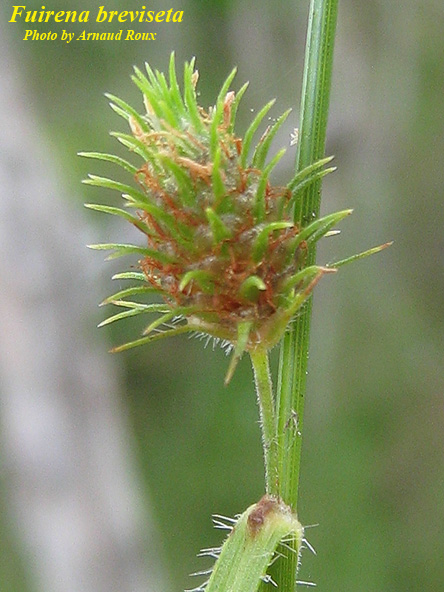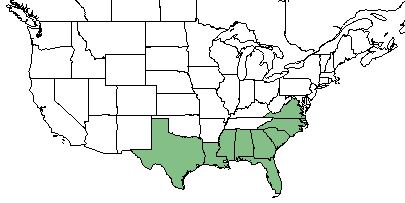Difference between revisions of "Fuirena breviseta"
(→Ecology) |
(→Distribution) |
||
| Line 27: | Line 27: | ||
==Distribution== | ==Distribution== | ||
| + | ''F. breviseta'' is found in Florida, Georgia, South Carolina, North Carolina, Alabama, Mississippi, Louisiana, and Texas. <ref name= "USDA"> [https://plants.usda.gov/core/profile?symbol=CEAM USDA Plant Database]</ref> | ||
| + | |||
==Ecology== | ==Ecology== | ||
===Habitat=== <!--Natural communities, human disturbed habitats, topography, hydrology, soils, light, fire regime requirements for removal of competition, etc.--> | ===Habitat=== <!--Natural communities, human disturbed habitats, topography, hydrology, soils, light, fire regime requirements for removal of competition, etc.--> | ||
Revision as of 20:20, 21 May 2018
| Fuirena breviseta | |
|---|---|

| |
| Photo by the Atlas of Florida Plants Database | |
| Scientific classification | |
| Kingdom: | Plantae |
| Division: | Magnoliophyta - Flowering plants |
| Class: | Liliopsida - Moncots |
| Order: | Poales |
| Family: | Cyperaceae |
| Genus: | Fuirena |
| Species: | F. breviseta |
| Binomial name | |
| Fuirena breviseta Coville | |

| |
| Natural range of Fuirena breviseta from USDA NRCS Plants Database. | |
Contents
Taxonomic Notes
Synonym: F. squarrosa
Variety: none
Description
F. breviseta is a perennial graminoid of the Cyperaceae family that is native to North America. [1]
Distribution
F. breviseta is found in Florida, Georgia, South Carolina, North Carolina, Alabama, Mississippi, Louisiana, and Texas. [1]
Ecology
Habitat
Phenology
The F. breviseta largely flowers in September with some later buds in October and November. [2]